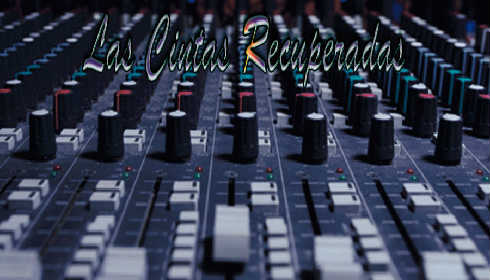
01.Brisas 02.Milonga Blues 03.Conmigo 04.Melodia en Candombe 05.Atardecer 06.Agua y Aceite 07.Aero Rings 08.Todo Voce | 09.Islands' Queen 10.Mi Cancion 11.Can't Reach 12.Septiembre Asi 13.El Gramillero 14.Figuras y Reflejos. |
Hugo Fattoruso vocals, keyboards, guitar
Gabriela Fattoruso vocals
Mariana Garcia Vigil vocals
Alex Fattoruso acoustic guitar
Christian Fattoruso electric guitar
Francisco Fattoruso electric bass
Percussion:
Arturo Prendez, Hector Prendez, Ramon Echegaray, Jane Tomkiewicz, Colon Budes, Daniel Kravetz, Fernando "Lobo" Núñez, Washington Martirena, Jorge "Foque" Gomez, Pablo "Piraña" Silva, Fernando Banega, Damian Peluffo, Hugo Fattoruso

Hugo Fattoruso, born in Montevideo, Uruguay, began his musical career as a prodigious and somewhat reluctant piano student at the age of four. By the time he was nine his father Antonio formed El Trio Fattoruso by drafting Hugo's younger brother Jorge on drums, with Hugo on accordion and Antonio on "inverted bucket bass" (using a broom as the neck, and a cord as the instrument's single string). This trio performed in street festivals, covering the variety of styles used in Uruguay's carnivals (boleros, murgas, tangos, etc.), giving Hugo an education in the rich harmonic stuff of disparate musical styles.
ReplyDeleteAt the age of 16 Hugo moved to the upright bass and began his tenure as the under-aged member of The Hot Blowers, a swing band that toured throughout Latin America in the late 1950s. This period could be seen as a second important milestone in Hugo's harmonic education, hammering home the concepts of improvisation and musical interplay.
By the early 1960s, rock'n'roll began to shake the world's foundation, and Hugo set out to express himself in that medium by forming Los Shakers, where he and his brother shared song writing, singing and guitar responsibilities. Los Shakers, Hugo Fattoruso (guitar, voice), Osvaldo Fattoruso (guitar, voice), Roberto "Pelin" Capobianco (bass, voice), Carlos "Caio" Vila (drums, voice), were a huge success throughout Latin America, as they were able to mold the complexities of bossa's harmonies, Uruguay's urban song style, candombe rhythms and the backbeat of rock into a new and contagious form.
By the late 1960s the influence of jazz, and of the Afro-Uruguayan rhythm of candombe, took Hugo to New York City, where he formed the group Opa. In Opa Hugo played keyboards and sang, while his brother played drums, and childhood friend Ringo Thielmann played bass. Opa's mixture of jazz, rock, Brazilian harmonies and rhythms, and Uruguay's African-flavored music (candombe) gave this band a distinctive voice, and garnered them recognition among musicians in the then growing "Latin jazz" scene. Opa released two albums on their own, 'Goldenwings' and 'Magic Time'. Opa's music served to influence the next generation of Uruguayan musicians, continuing the Fattoruso's impact on Uruguayan musical culture.
From that point on Hugo travelled the U.S. and worked with a variety of artists, ranging from Hermeto Pascoal to Ron Carter to The Dixie Dregs. After working in the U.S. with Milton Nascimento, Hugo spent several years living in Rio de Janeiro, where he worked with several prominent Brazilian artists including Djavan, Geraldo Azevedo, Chico Buarque de Holanda, Nana Vasconcelos and Toninho Horta. He has recorded extensively with Milton Nascimento, on the records "Milton", "Journey To Dawn", "Planeta Blue Na Estrada Do Sol", "Angelus", and "Nascimento", winner of the 1997 World Music Grammy Award. In addition to his piano and accordion playing, the compositions on the release "Nascimento" were co-arranged by Milton and Hugo.
Throughout our days at school, the term "Homework" is associated with the practicing process which prepares us all for the future. To describe this project, the phrase "home is where the heart is" also comes to mind. Hugo spends much of his time at home, creating, and has done so for most of his life. Here he takes what he has developed at home, and with family and friends offers you this flavorful variety of sounds, melodies, rhythm and love. As knowledge exists for us to acquire, and then to pass on to others, let this musical experience serve both these purposes.
Homework
ReplyDelete